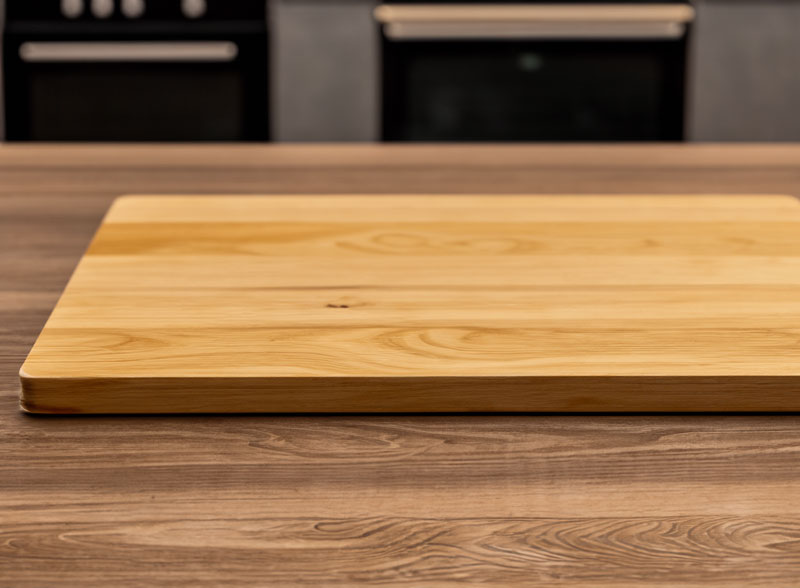
Nothing beats the beauty and durability of a cherry and walnut cutting board. It's not just a simple product, it's an artwork, crafted from the loveliest of woods. The lustrous, warm hues of a walnut cutting board combined with the rich, red color of cherry wood, creates a unique, aesthetically pleasing kitchen tool. A walnut cutting board is gorgeous on its own, yes, but when walnut and cherry are expertly mixed together, its look and function both rise to a whole new level.
Preparing food on a walnut and cherry board is a delightful experience. It's not just a matter of it being a sturdy surface, it's the knowing that you're using something made from top-quality walnut and cherry wood. While a walnut cutting board might be eye-catching, a cherry board brings its own charm to the table. The woods are so durable, they're going to outlive most kitchen tools. Such a cutting board is not just a commodity, it is an artwork in your kitchen.
To bring out the stunning grain of the cherry and walnut used in our cutting boards, you need to apply a liberal coat of mineral oil mixed with beeswax. This not only preserves and protects our cutting boards, but also accentuates the grain, bringing out the deep, rich colors. Over time, you'll notice the cherry or walnut grain becoming more prominent, revealing an array of beautiful, natural shades. A cherry cutting board can display an enticing deep red, while a walnut cutting board can range from a dark brown to a delicate light hue. These boards are not just functional, they are art pieces, thanks to their unique grain patterns. No two cutting boards are alike due to these innate grain variations. Let our boards be the conversation starter at your next dinner party.
Definitely, mixing walnut with cherry wood for a cutting board could turn out to be the best decision you'd make. Not only does mixing these woods create stunning color contrast, but it also combines the durability of walnut with the natural brilliance of cherry. Speaking of walnut, it's hard to find a more resilient wood for a cutting board. And the cherry? Its color deepens over time, giving your cutting board an increasingly rich look. The price might be a bit higher than a single wood cutting board, but it's absolutely worth it.
Maple, on the other hand, is renowned for its hardness and longevity. A walnut and maple cutting board is both practical and fashion-forward. It brings out the color contrast of deep brown walnut against the lighter brown maple, making the cutting or serving board look more appealing. A little pricey, yes, but think of it as an investment in quality and beauty.
Caring for your cherry and walnut board isn't as daunting as you might think. While cherry boards are slightly softer than walnut, both types of cutting boards are sturdy and can last for generations with the proper care. The beautiful color and unique patterns in the grain of the cherry and walnut make these cutting boards truly a work of art.
The key to caring for these cutting boards, as with any wooden kitchenware, is to clean them properly and regularly oil them. Avoid using harsh chemicals or soaking them in water, which can warp and damage the wood. Instead, gently wash your cutting boards with warm, soapy water and dry immediately.
Oil your cherry and walnut cutting boards regularly with food-grade mineral oil to maintain their beautiful colors and extend their lifespan. Add some beeswax to the oil to make it look even more beautiful. The oil brings out the rich, warm tones of the walnut and the stunning contrast of the cherry wood grain. Regular care will keep your cutting boards looking fabulous for years to come.